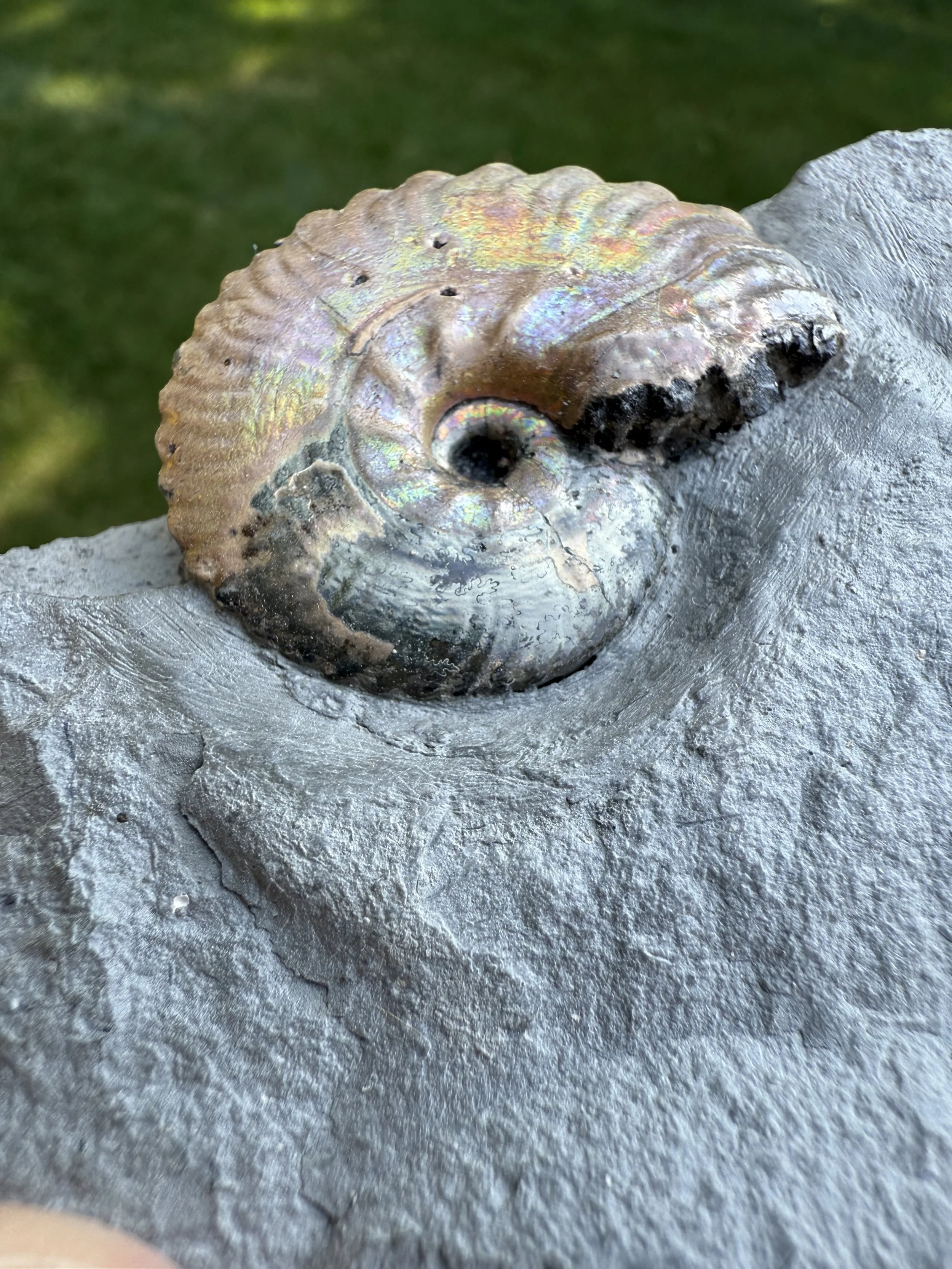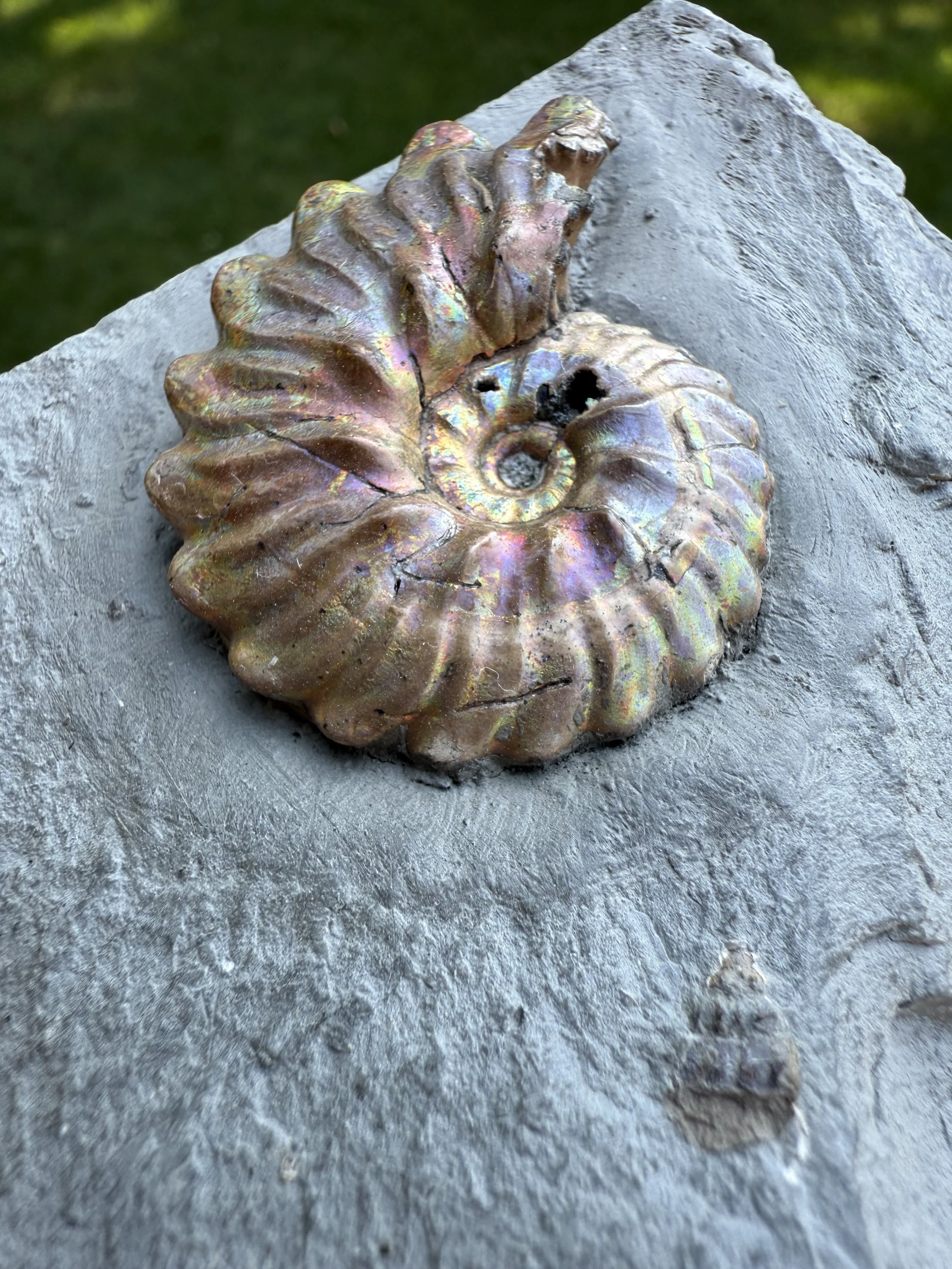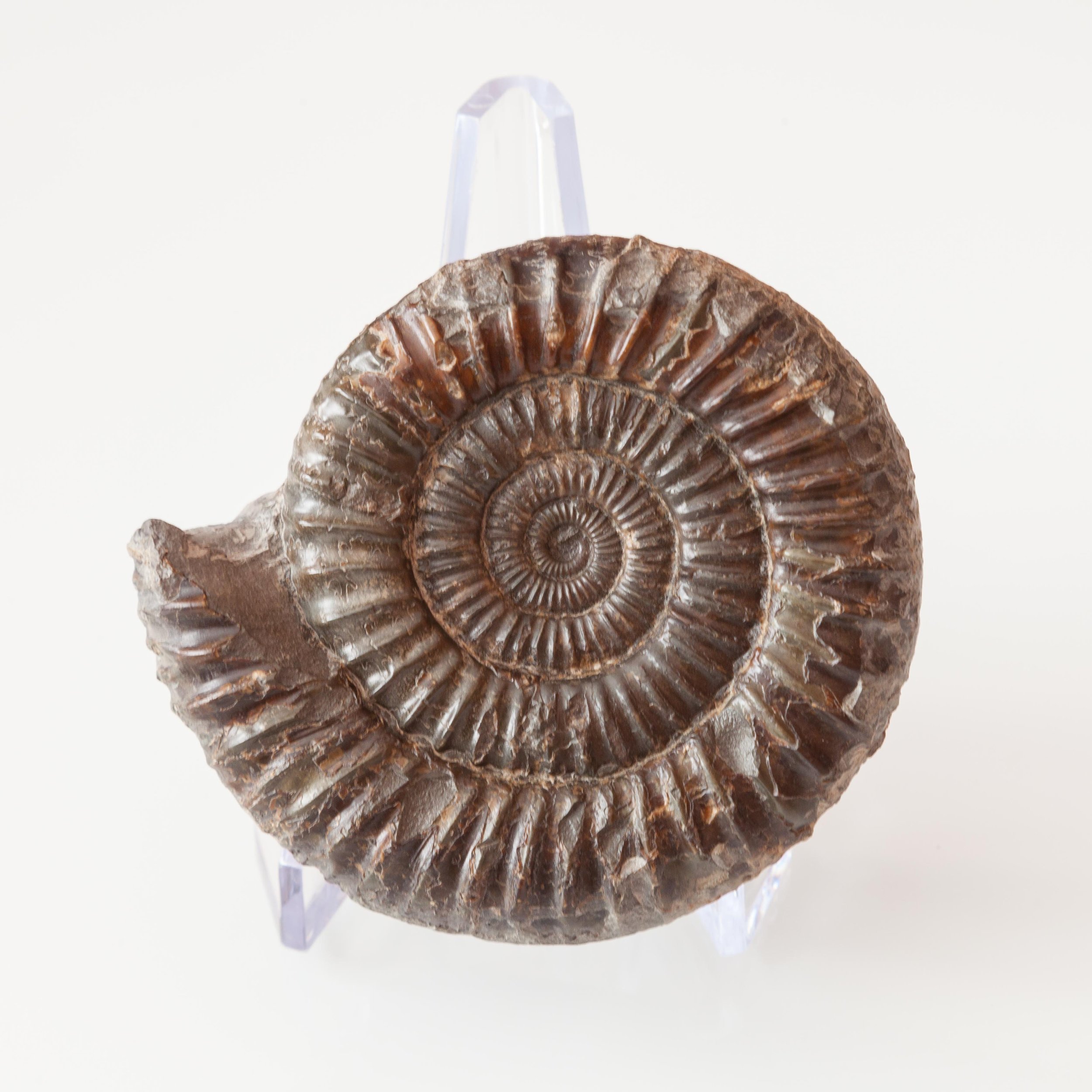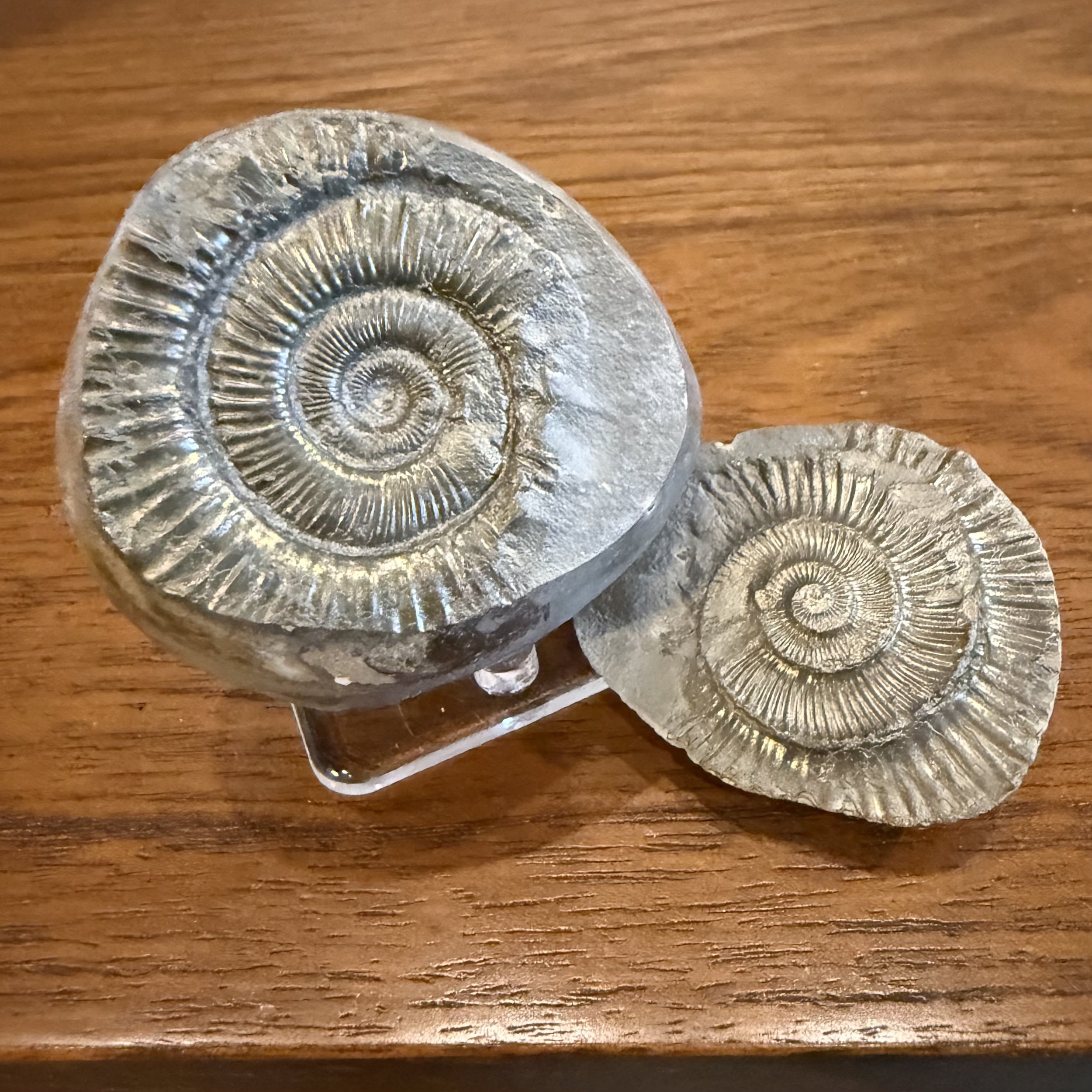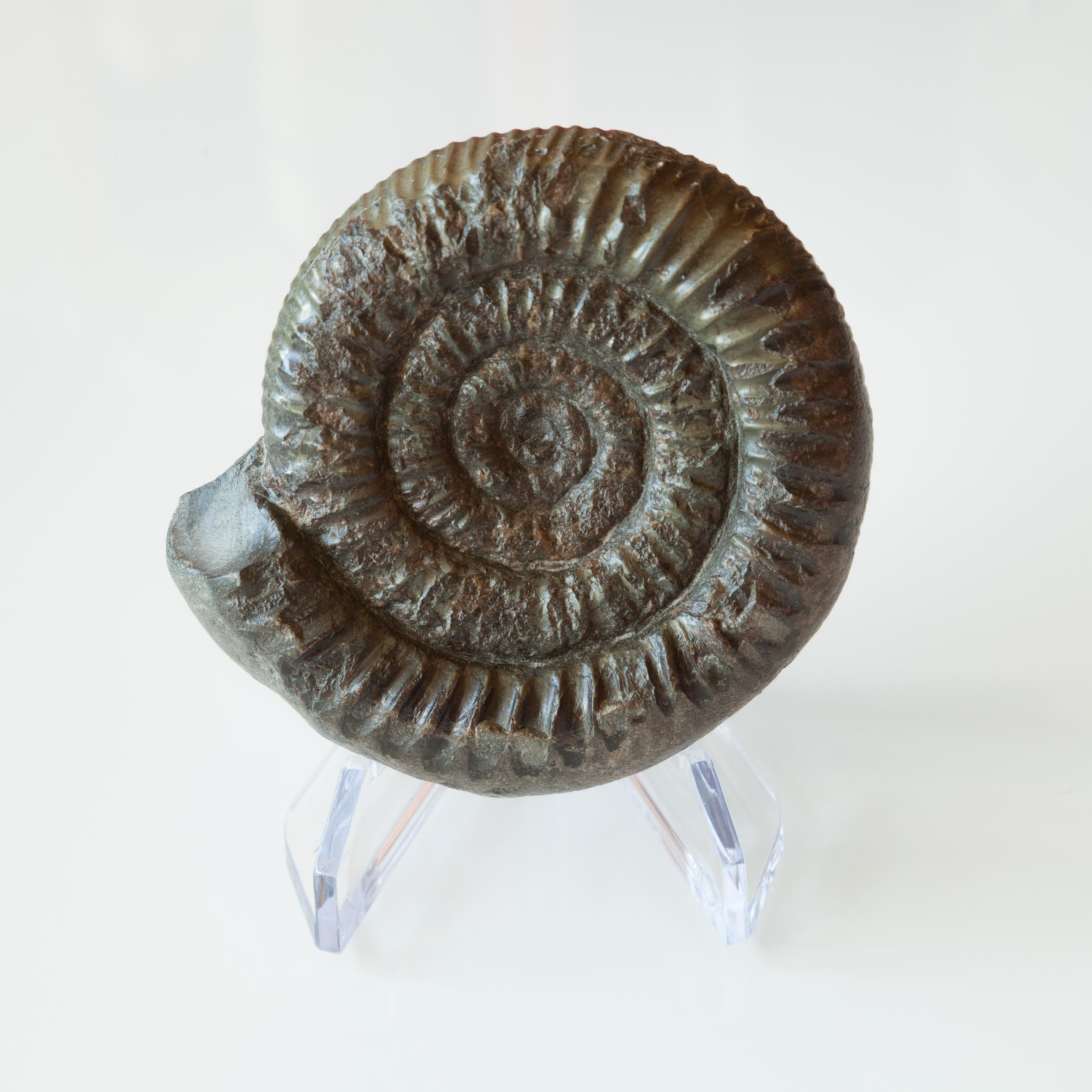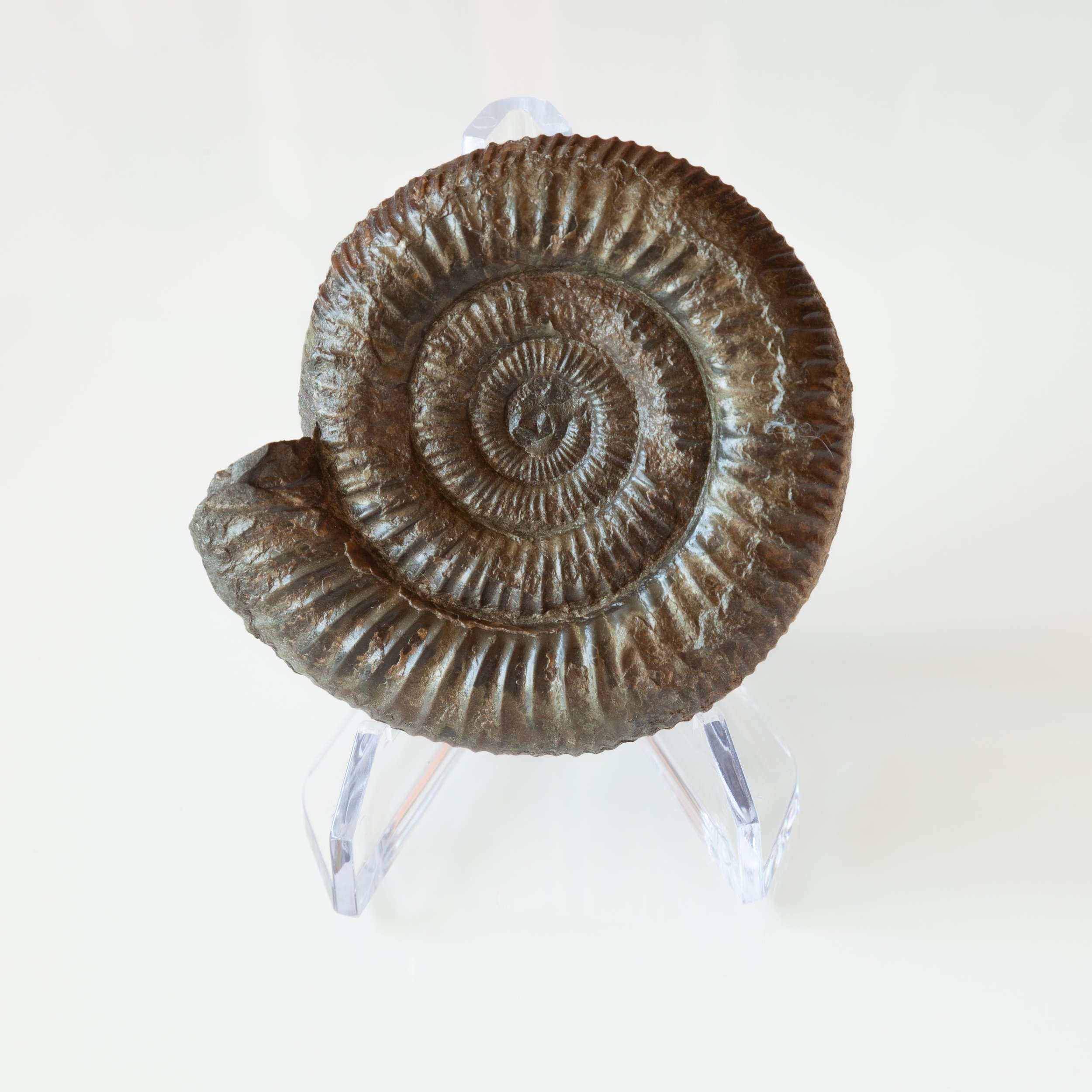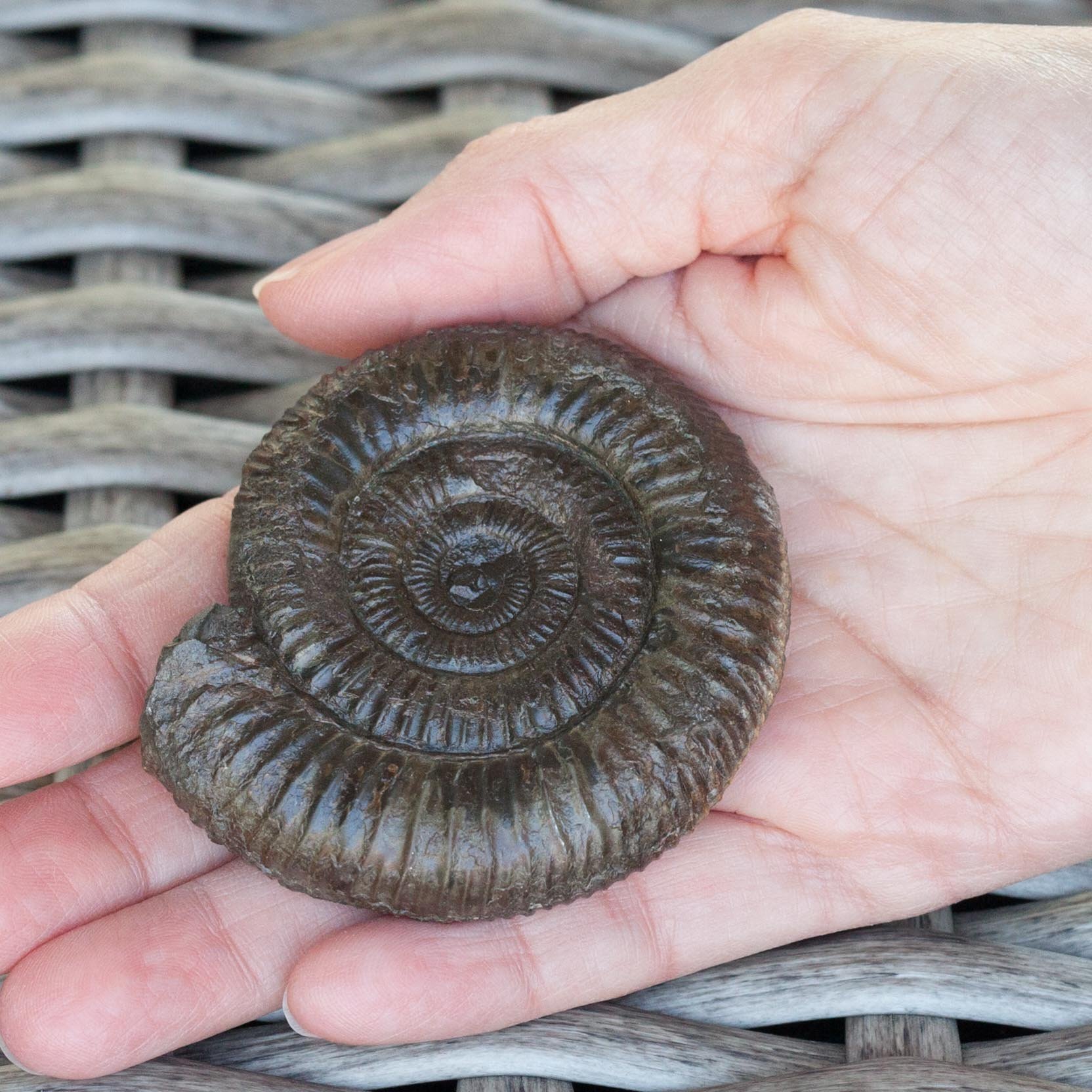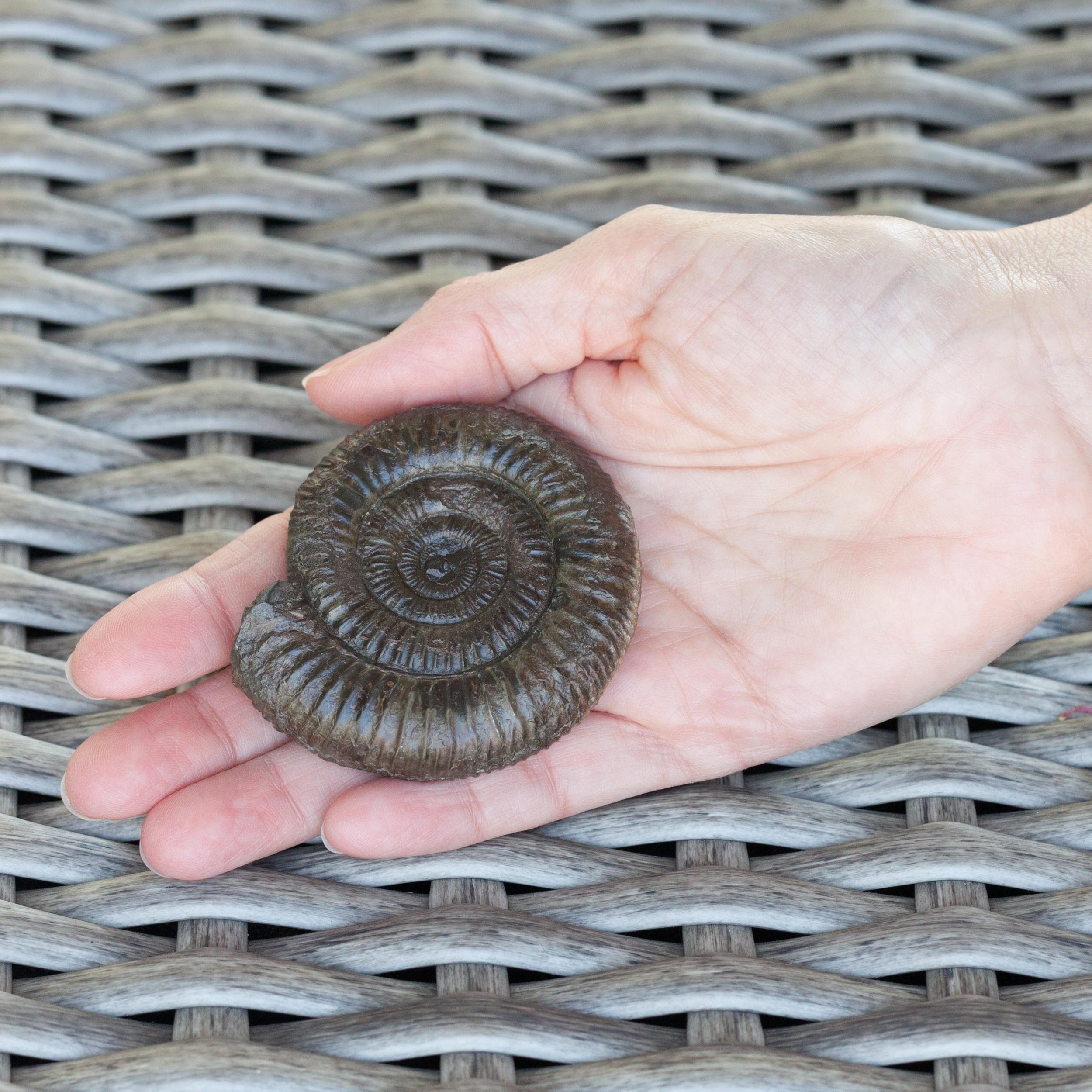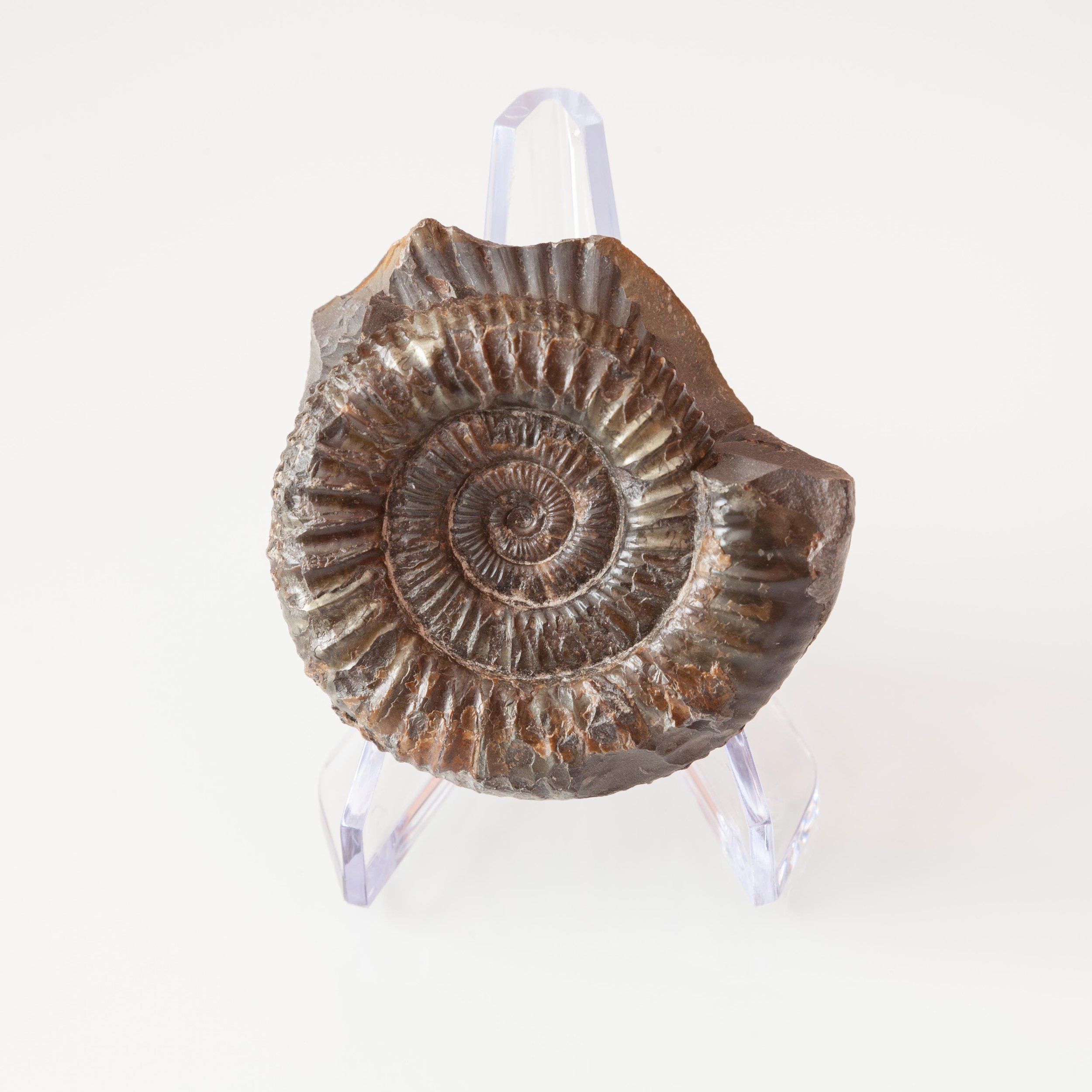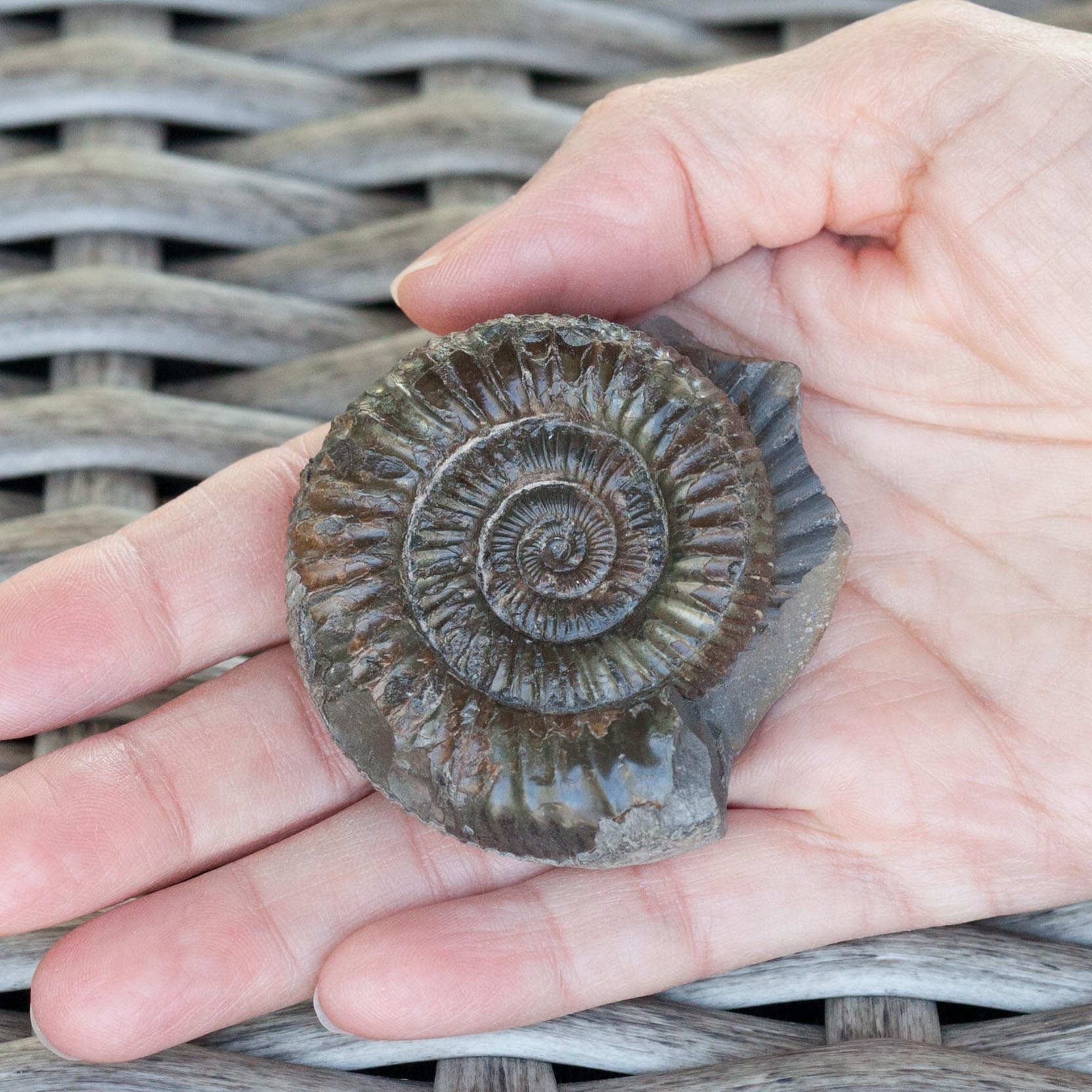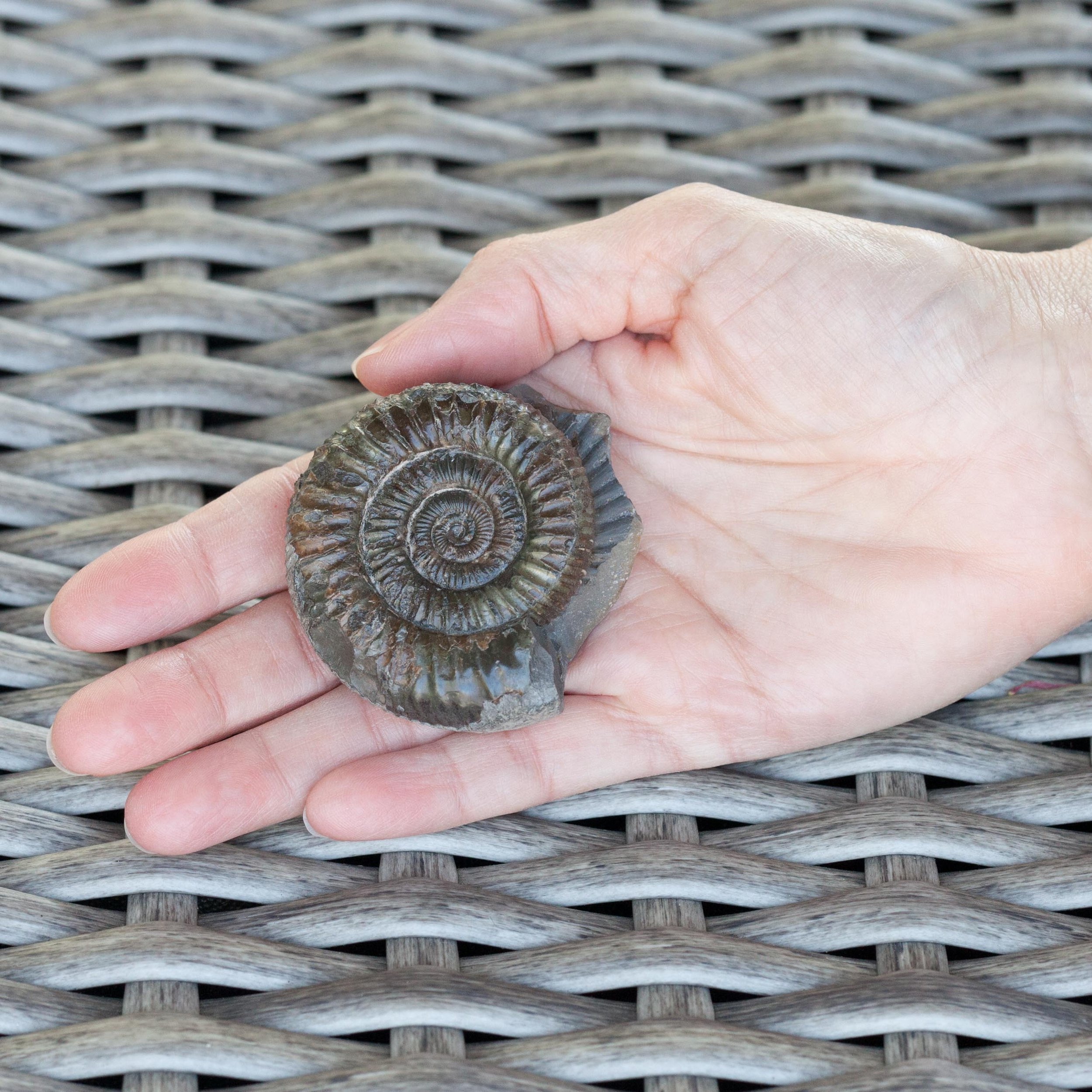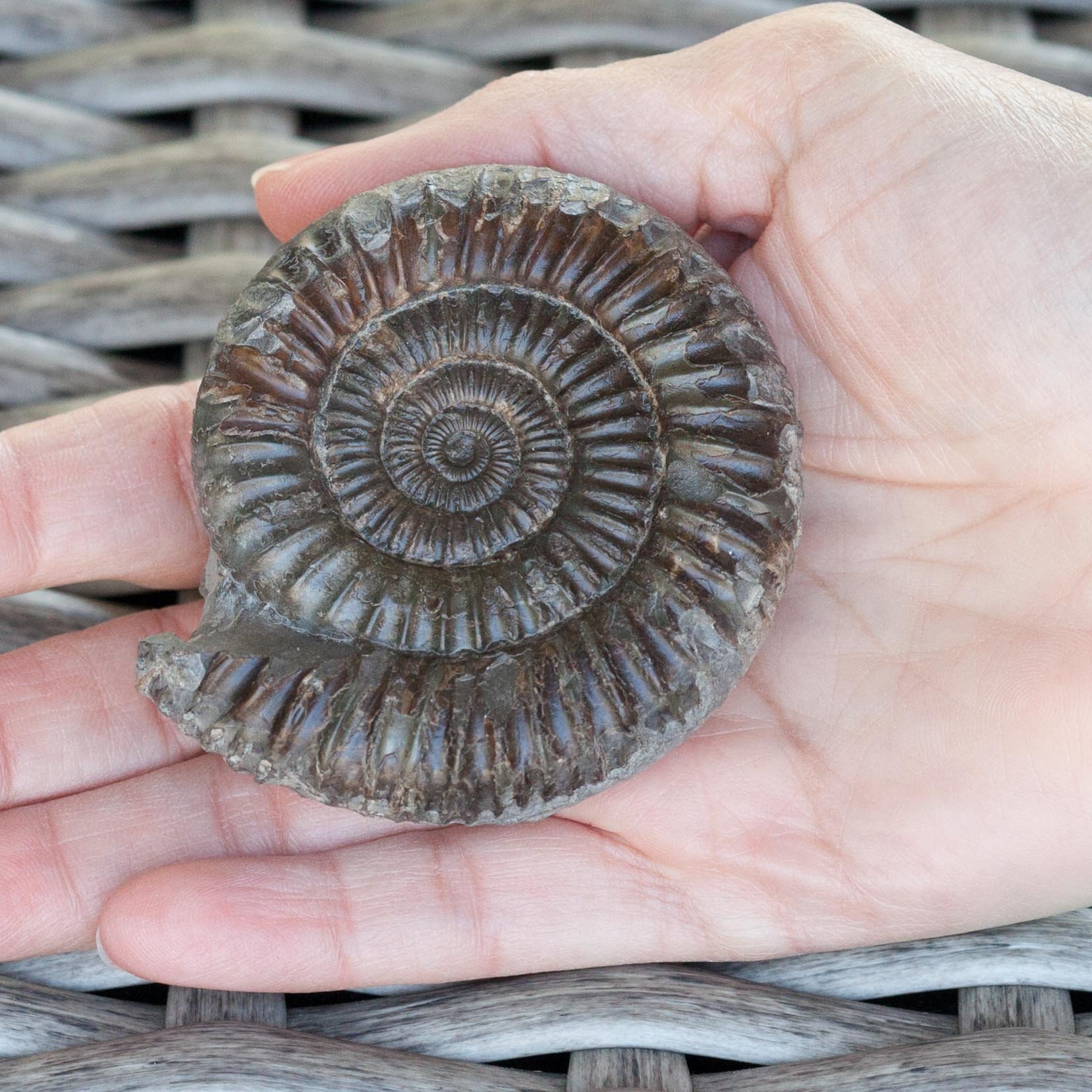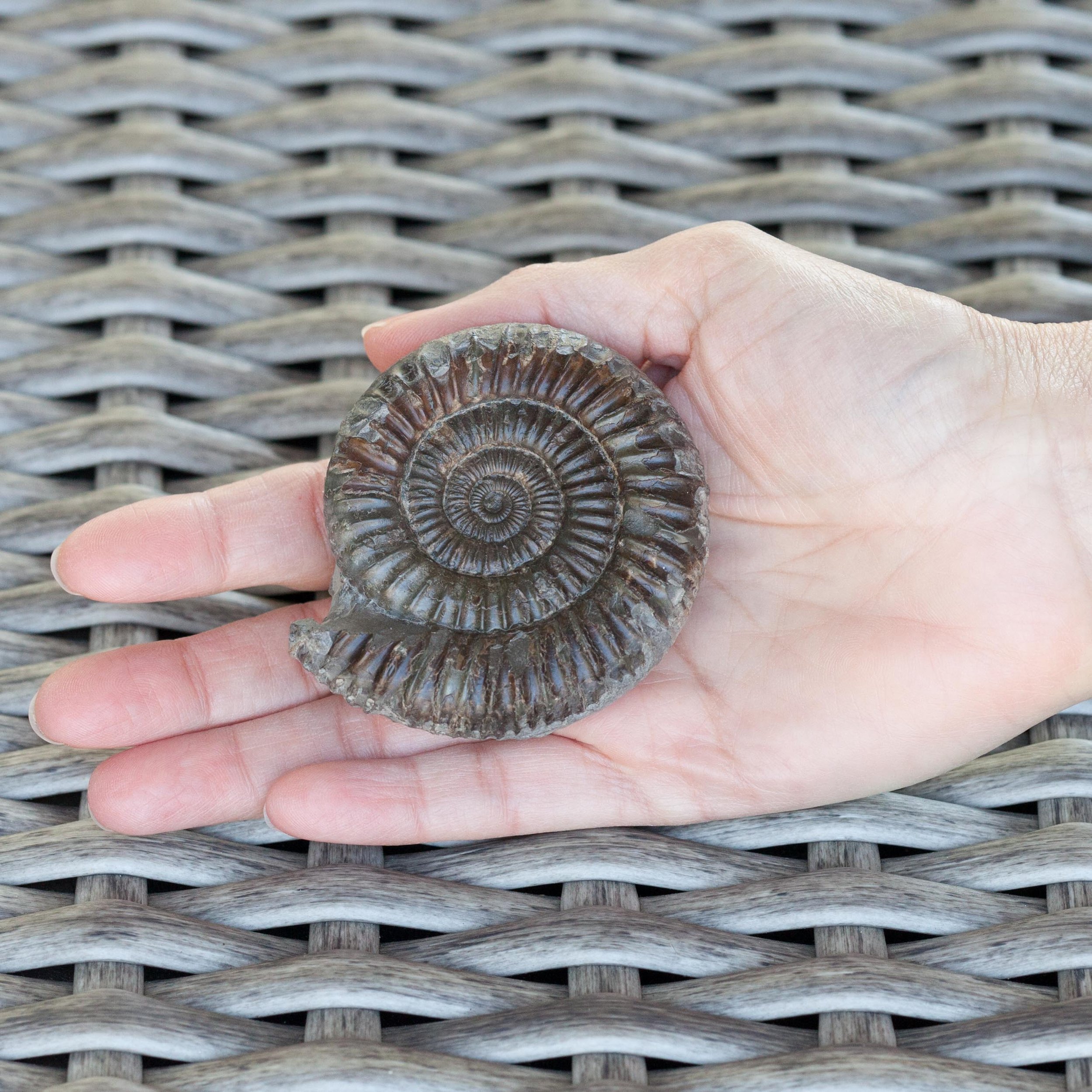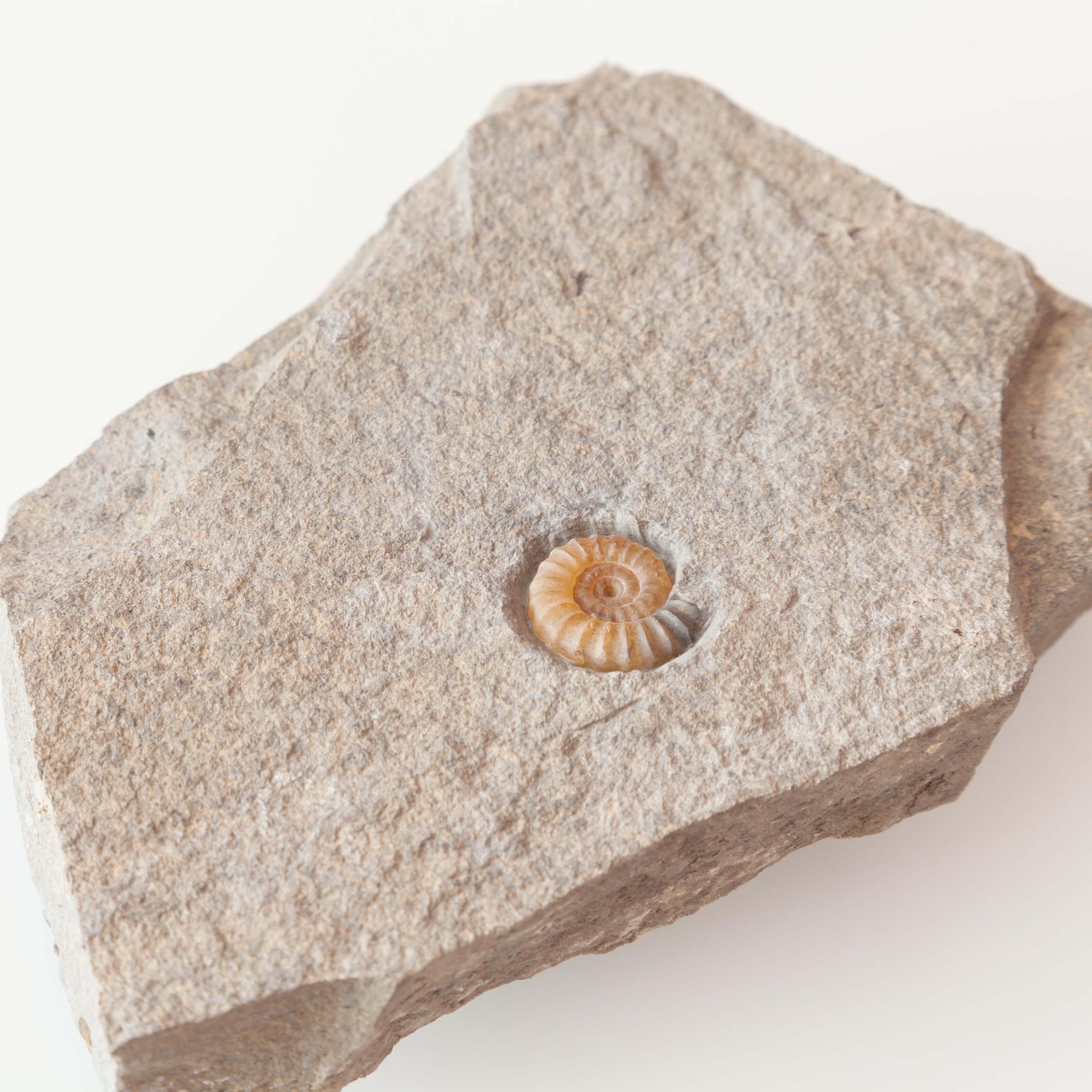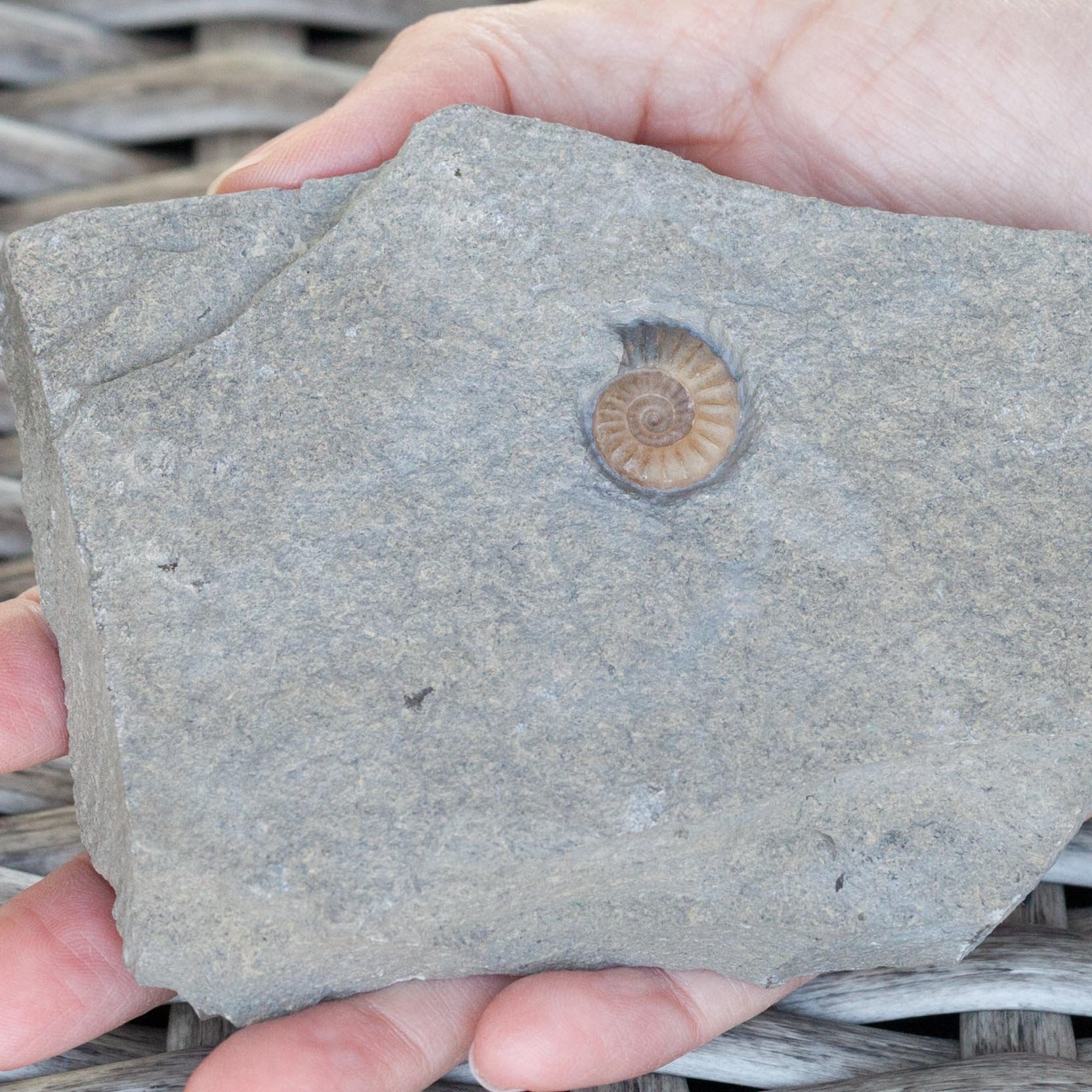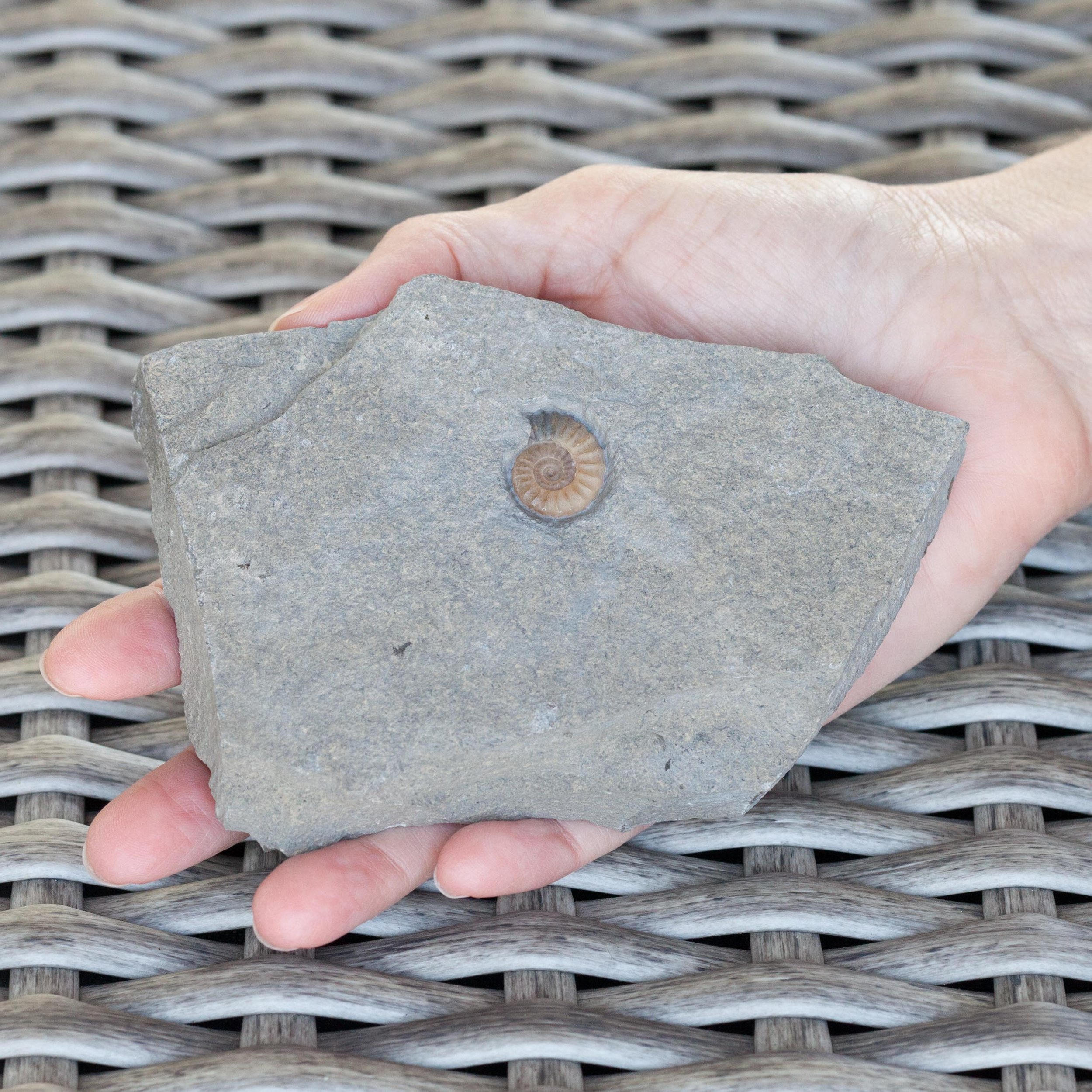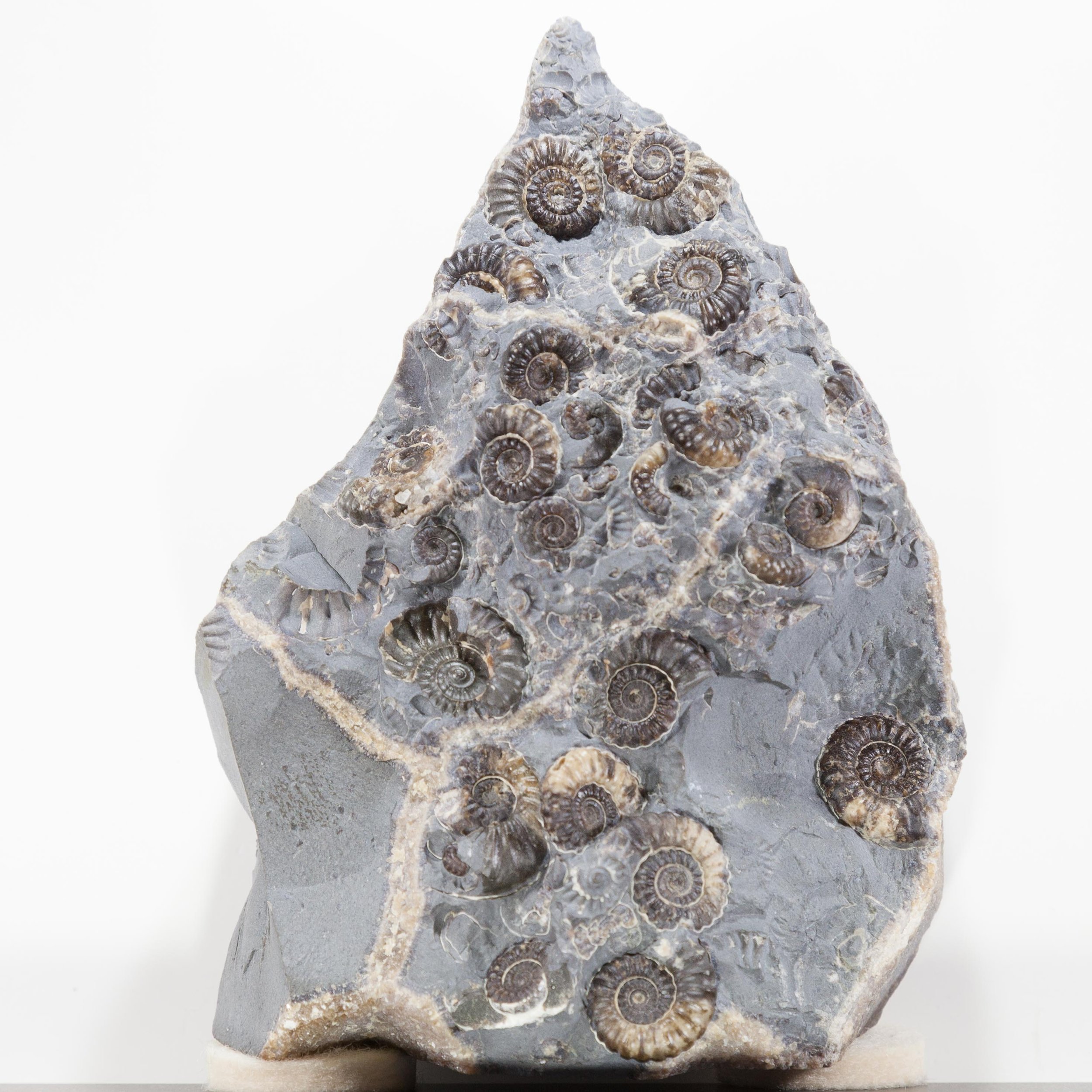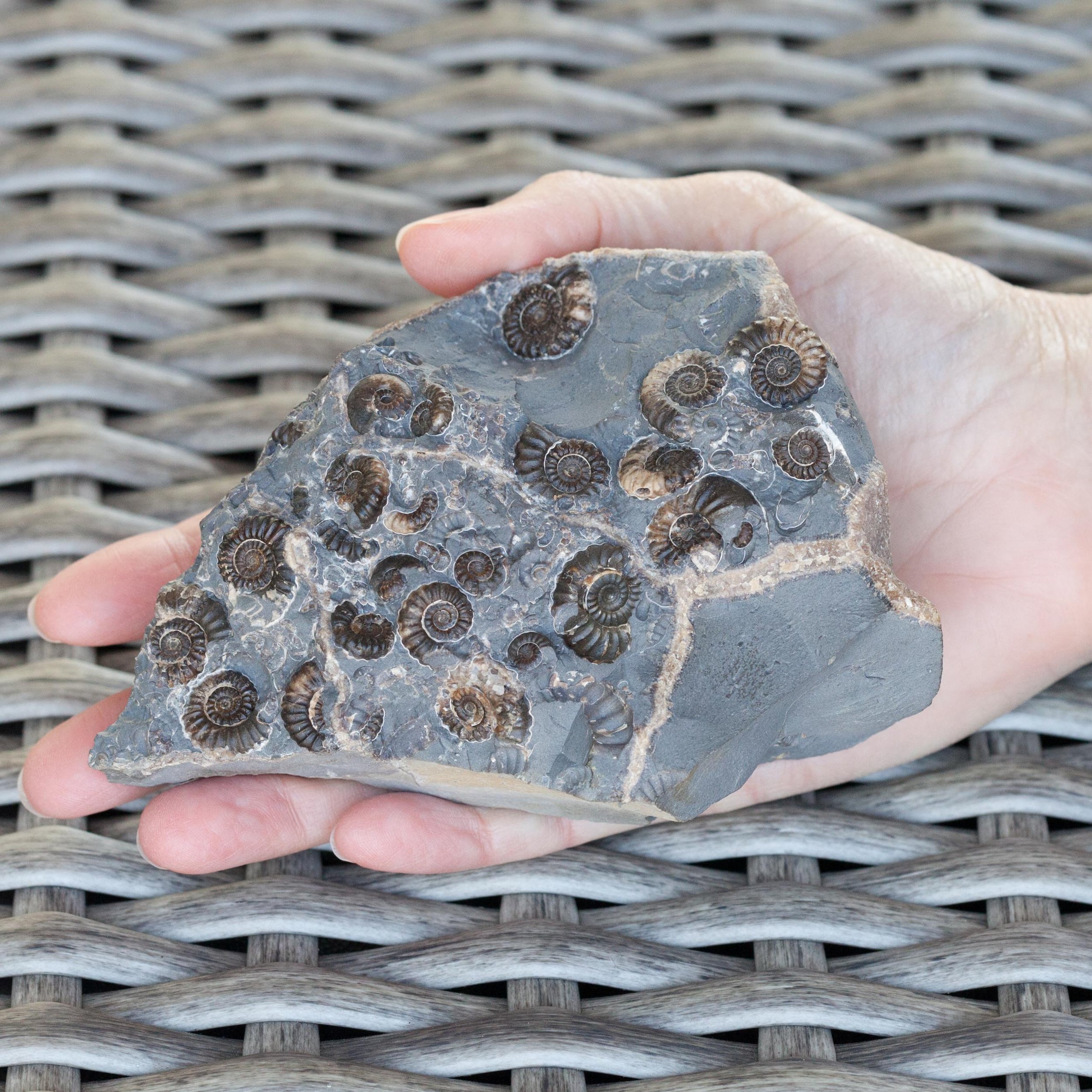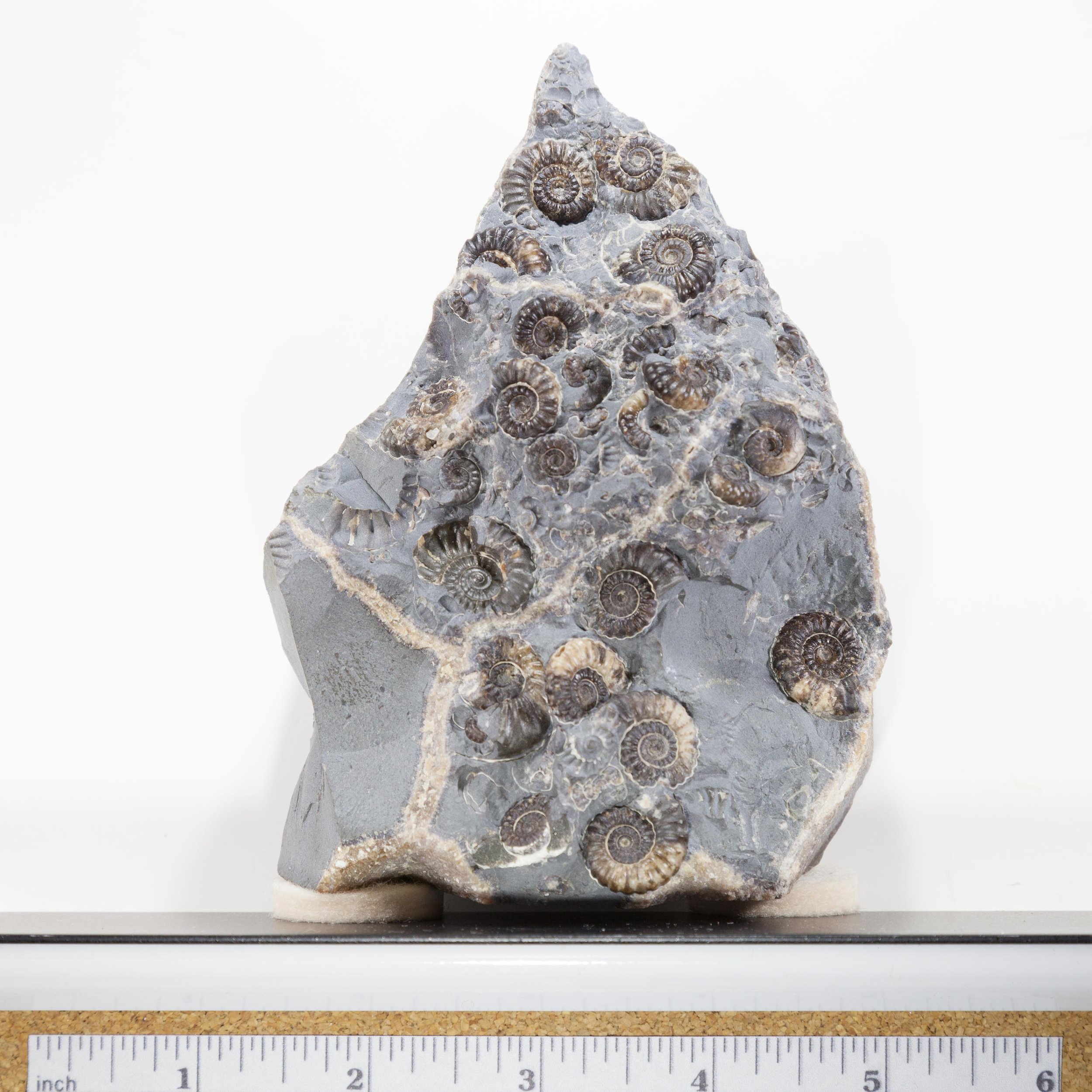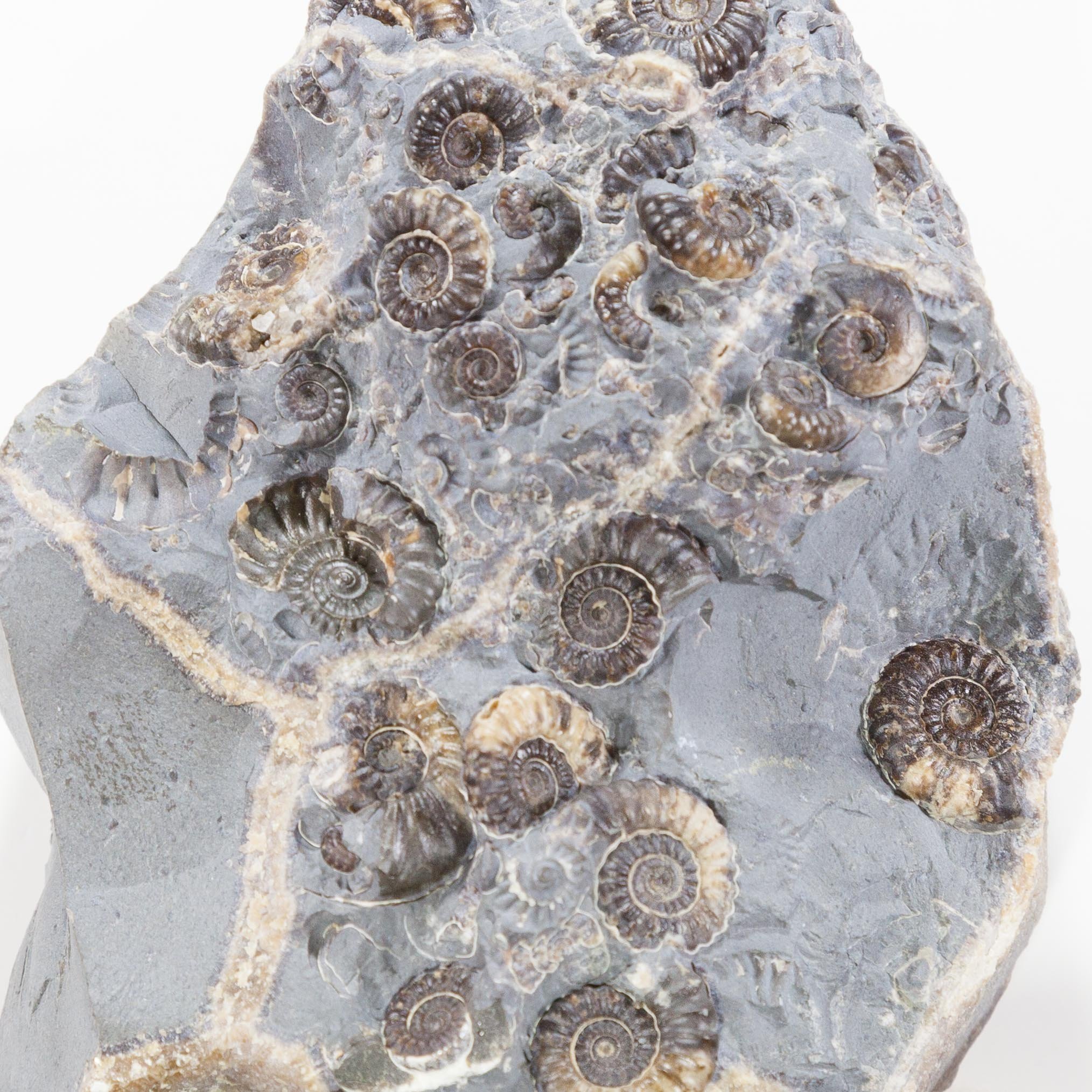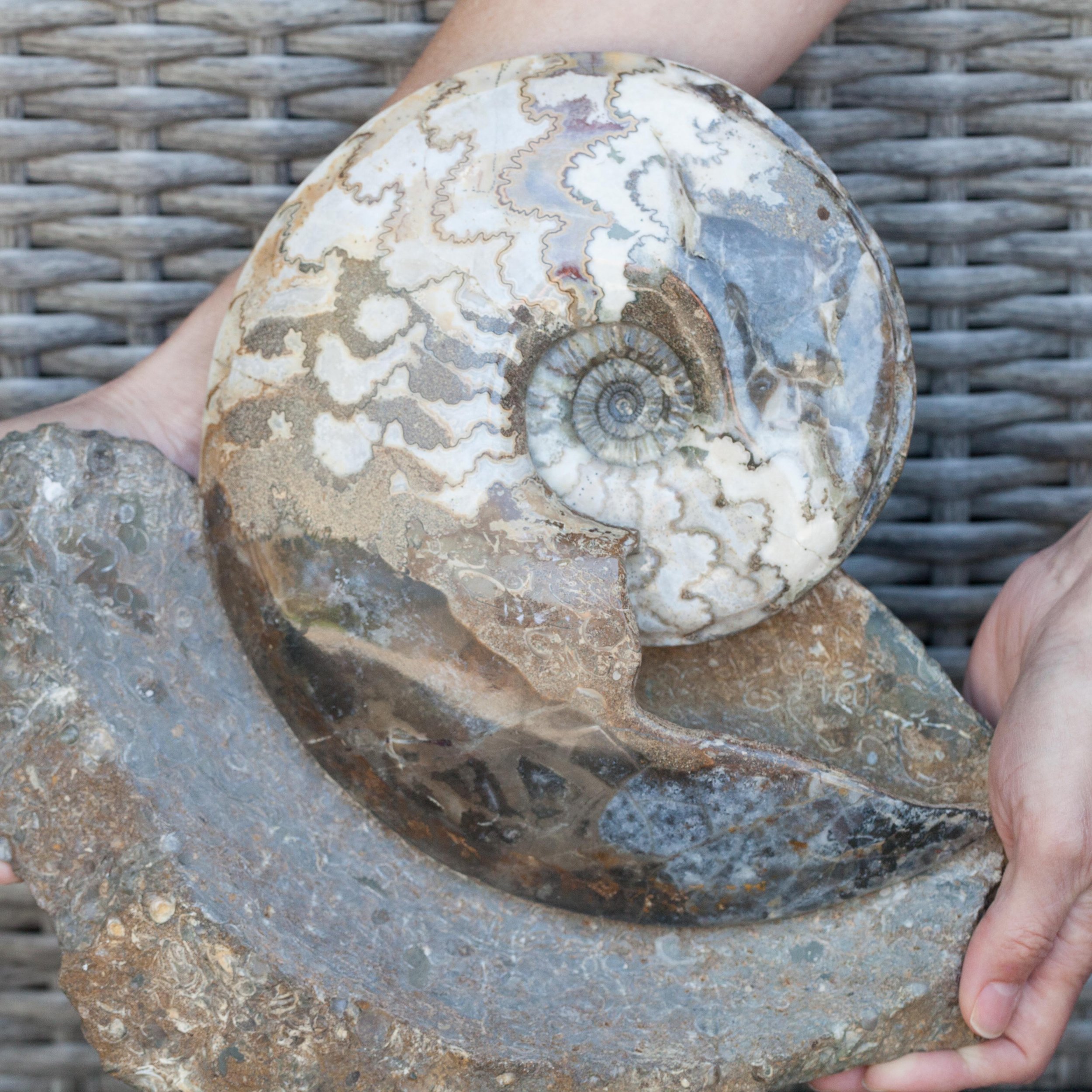 Image 1 of 3
Image 1 of 3

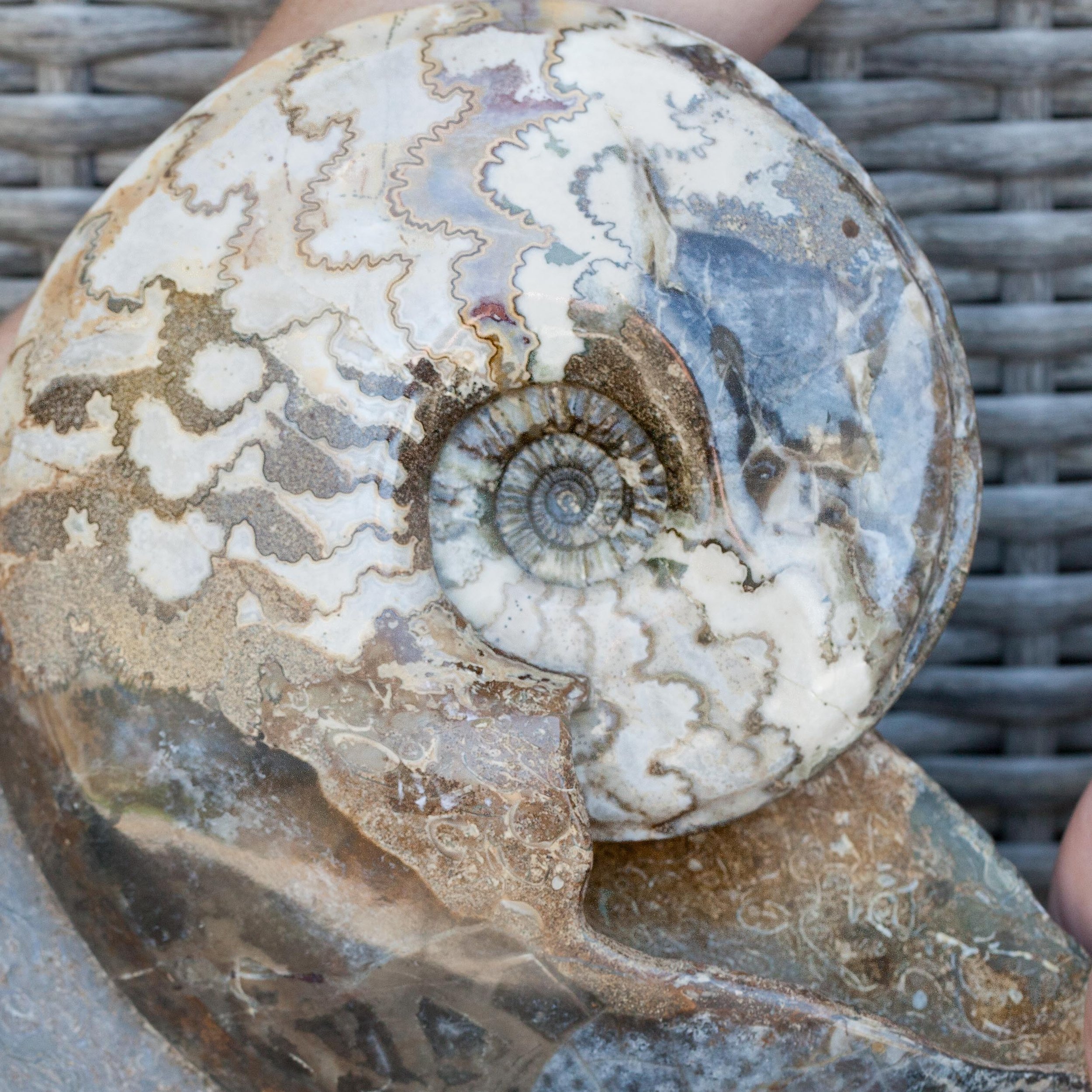 Image 2 of 3
Image 2 of 3

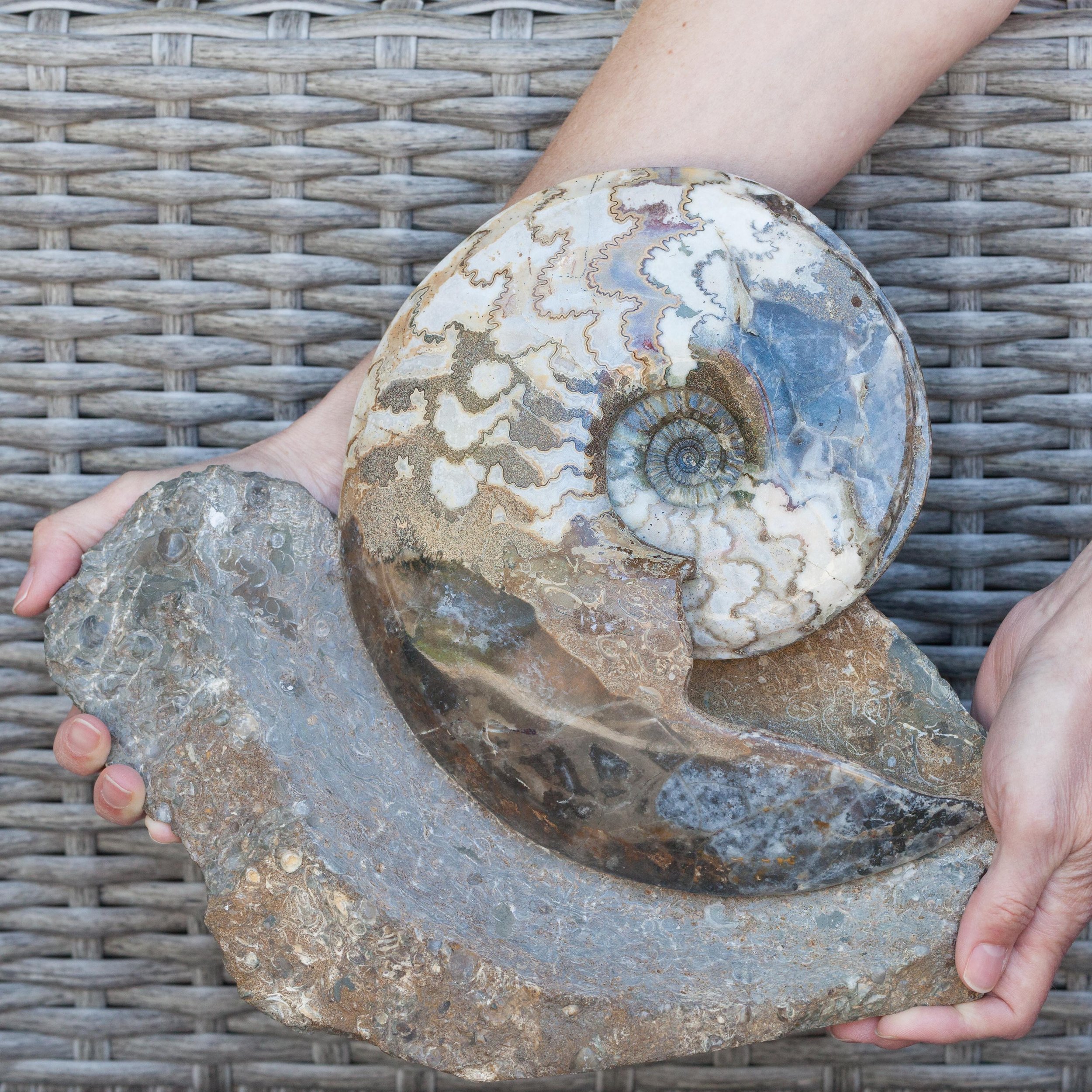 Image 3 of 3
Image 3 of 3




Eparietites impendens
Vendor: Fossil Soup
SKU Number: SQ1461173
Eparietites impendens from the Frodingham Ironstone Formation, Obtusum Zone, Lower Jurassic, Conesby Quarry, Scunthorpe, North Lincolnshire, England.
This Large 25 cm - almost 10 inch ammonite is a beautiful example of a now very rare polished British fossil from the Lower Jurassic rocks of Northern England.
The fossil orientation that was chosen during preparation, has created a very aesthetically pleasing display piece that stands proud of the Ironstone base.
Both sides of the ammonite have been professionally exposed from the rock and then polished to a high sheen. This showcases in great detail each of the suture lines between the chambers of the ammonite. The final, larger body chamber, has been "scooped out", which really helps add to the overall appeal of this fossil.
Full dimensions are listed below.
Vendor: Fossil Soup
SKU Number: SQ1461173
Eparietites impendens from the Frodingham Ironstone Formation, Obtusum Zone, Lower Jurassic, Conesby Quarry, Scunthorpe, North Lincolnshire, England.
This Large 25 cm - almost 10 inch ammonite is a beautiful example of a now very rare polished British fossil from the Lower Jurassic rocks of Northern England.
The fossil orientation that was chosen during preparation, has created a very aesthetically pleasing display piece that stands proud of the Ironstone base.
Both sides of the ammonite have been professionally exposed from the rock and then polished to a high sheen. This showcases in great detail each of the suture lines between the chambers of the ammonite. The final, larger body chamber, has been "scooped out", which really helps add to the overall appeal of this fossil.
Full dimensions are listed below.
Additional Information
Ammonites are a group of extinct marine mollusks that occupy the same class that includes octopuses, squids, and nautiluses.
The group Cephalopoda is divided into three subgroups: coleoids (including squids, octopuses and cuttlefishes), nautiloids (the nautiluses) and ammonites.
During their long history, ammonites survived three mass extinctions—most notably the Permian extinction, a global warming that was brought on by volcanic activity about 252 million years ago, and that killed 96 percent of the planet’s marine species. While many species of ammonites died out in that extinction event, scientists believe the survivors diversified explosively in the million years that followed. Ammonites hunted the planet’s seas until they were entirely wiped out by the same cataclysm that claimed the non-avian dinosaurs about 66 million years ago.
References:
